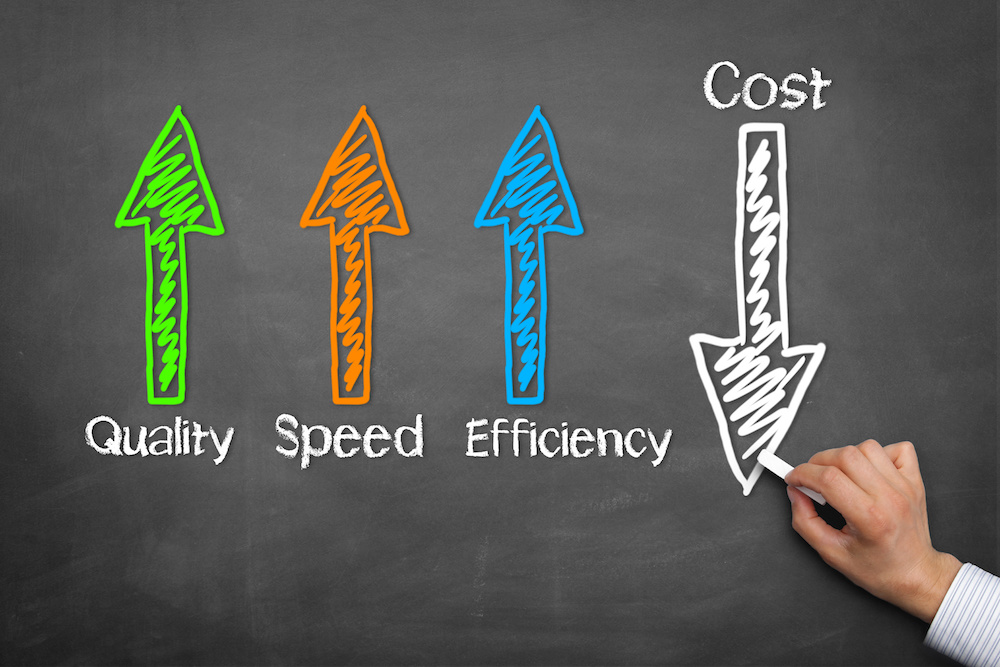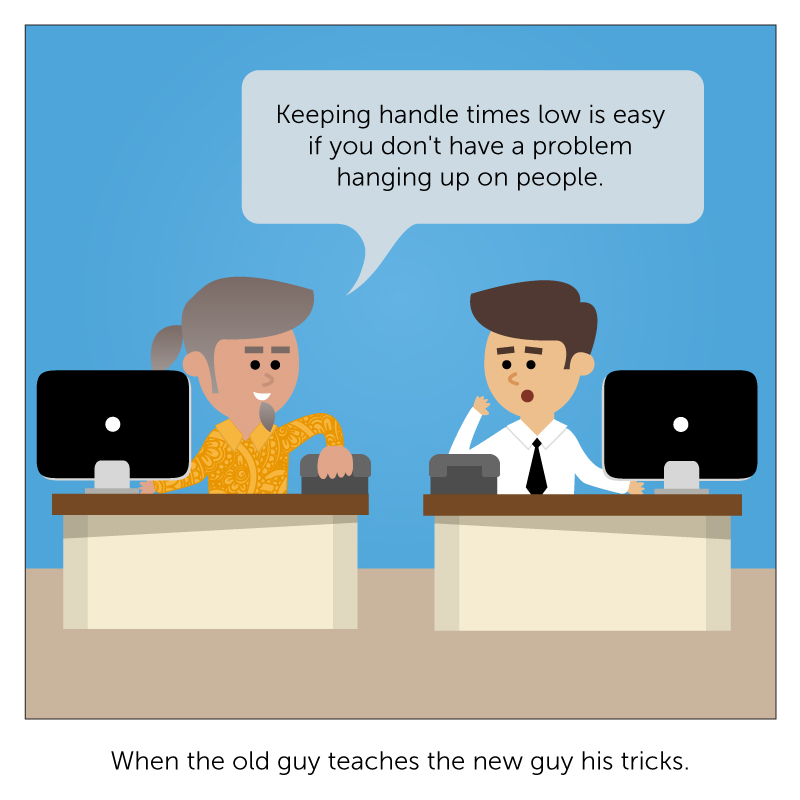When Customer Engagement Analytics Is Needed is the third of a series on Customer Engagement Analytics.
In the second blog in this series, we discussed how Customer Engagement Analytics in the contact center gives you insight on your customers, helps you optimize your systems, and improves agent performance. Now we’ll explore when Customer Engagement Analytics is needed in the contact center.
Customer Engagement Analytics is needed when:
- You have challenges in your contact center and you don’t know why
- You want to improve key contact center metrics and you don’t know how
We’ll look at eight main circumstances when Customer Engagement Analytics can help you solve issues in your contact center.
1. Low Customer Satisfaction
When customer satisfaction is low and needs improvement, you need insight into customer, system, and agent behavior, and Customer Engagement Analytics provides this. A classic indicator of low customer satisfaction is abandoned calls. Let’s say that you start your analysis thinking that customers are abandoning calls because of long wait times. But the data in your ACD tells you that they’re actually abandoning calls after they get routed. Then when reviewing call recordings, you realize they were routed to the wrong agents, or agents that have the wrong answers. So you create more options in the IVR, set up routing to use the IVR data and the customer data in the CRM to predict customer issues, and make sure that customers with particular issues always get routed to agents who can solve the problem quickly. This is a classic example of when Customer Engagement Analytics is of value.
2. Customers Are Leaving
Another example of when Customer Engagement Analytics is useful is when customer retention is low. When you start analyzing call recordings, you find out that more than half the customers are closing their accounts without being informed of alternative account options, such as temporary account suspensions, or lower cost or higher-value options. You then dive in to figure out which agents are not mentioning those options and why. Then you can determine if the agents need more training or if you need to create a group of retention specialists you can route the callers to.
3. First Call Resolution is Low
When first call resolution is low, is when you need Customer Engagement Analytics. For example, let’s say that 40% of the issues customers bring to your contact center have to do with customers not understanding a change to their bills. You start investigating customer behavior and discover that customers are not visiting the webpage that explains the change, and there is nothing on the IVR, so customers are getting in long call queues to get their questions answered. So you make the webpage easier to find, create a special path on the IVR with a recorded answer and temporarily create a group of agents dedicated to explaining the billing change efficiently and effectively – and first call resolutions go up.
4. Sales and Cross-Sales Need Improvement
When Sales and Cross-Sales are not what they should be, is when Customer Engagement Analytics is needed to figure out why. For example, let’s say your voice agents have not been successful at selling your upgraded product, but you have a few chat agents with better results. With desktop analytics, you discover that the chat agents have two things that the voice agents don’t: they have access to a system that is integrated with your Customer Relationship Management (CRM) system, and it automatically lets them know which customers are eligible for an upgrade. And call recordings make it clear that only a few of the voice agents have been trained on the new product. You provide the voice agents with training on the new product, and integrate the system they use with your CRM, and sales improve dramatically.
5. Agent Productivity Needs Improvement
When call times are going up and call volumes are going down, is when you need Customer Engagement Analytics to understand why. You start looking at what agents are doing and what is taking them so long. You discover that there has been an increase of customer calls with the same intent: to solve a problem with a product. And while a quick-fix answer to the issue is available to all the agents, that system has been upgraded to accommodate a hardware change, and desktop analytics makes it clear that agents now have to switch back and forth between multiple systems to find the information they need – and some agents do it and some just try to figure out the issue themselves. First, you start routing these product issue calls to the agents who have a track record of easily solving the problem, and second, you make the move to a cloud system that supports easy collaboration with subject matter experts and access to knowledge resources so you never have this kind of problem again.
6. Agent Business Performance Needs Improvement
A good example of when Customer Engagement Analytics can really help is anything having to do with business metrics, such as sales, first call resolutions, and customer satisfaction. Let’s use sales as an example. Say you have a group of agents dedicated to sales, but revenue per agent, revenue per call, and upsells are not what they need to be. With Customer Engagement Analytics, you can segment your callers into their intent: first sale, second sale, or upsell, and see what behaviors they exhibited prior to talking to the contact center, on the web for example. Then look at agents, what they said and which customers they did and did not have success with. Based on that, you can rank agents based on which customer intents they delivered the best results. Then you use analytics to drive your routing so that you always route a customer with a particular intent to the best agent available to deliver the desired results. Odds are, you will see your sales metrics improve significantly.
7. Contact Center Performance Needs Improvement
When overall contact center performance needs improvement is when Customer Engagement Analytics can be a huge help. Take the sales example in #6 above, and now factor problem resolution, retention, and customer satisfaction into your segmentations – in addition to sales. Again, you segment your callers by their intent, and then determine which agents and agent behaviors delivered the business results you want and don’t want. You rank the agents, and then use analytics to route customers based on their intent to the agent available who has the best performance record for that intent. Predictive analytics routing can help, because you can often determine intent by using the customer attribute and behavior data in your CRM to predict their intent. This method has proven to significantly increase business metrics across the board.
8. Contact Center Efficiency
Whenever contact center efficiency needs improvement, is when Customer Engagement Analytics can come to your aid. For example, say your business has been expanding significantly, but despite hiring and training many new agents, your call volumes, call times, and wait times have gone up, while first call resolutions and calls per agent have gone down. Customer Engagement Analytics can tell you how your calls are divided up by customer intent and how different agents perform with customers with that intent. You then realize that not all agents are good at the same things, and it is time to break your agents into groups based on the kinds of customers and intents they handle most efficiently. Then you start using predictive analytics to predict customer intent and proactively route them to the group of agents most efficient at handling that intent.
When Customer Engagement Analytics Summary
In conclusion, when you have any kind of issue in your contact center, is when Customer Engagement Analytics can help. The answers can be found in your systems, agent behaviors, and customer behaviors, and Customer Engagement Analytics is how you find the resolution and predictive-analytics routing is often how you solve it. You can use Customer Engagement Analytics whenever you need to improve business or operational results.
Data in WFO and Speech-enabled IVR systems can be significant contributors to help with Customer Engagement Analytics. Read about BroadSoft’s addition of Workforce Optimization and Speech-enabled IVR to CC-One.
Come back next week for the next part of our Customer Engagement Analytics Series – Who Needs Customer Engagement Analytics. To learn more about the CC-One tools for Customer Engagement Analytics, visit CC-One Contact Center Analytics.








